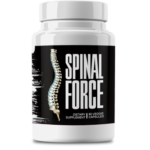This Village-Made Chinese Pain Reliever Eliminates Back And Joint Pain!
Lupus Joint Pain Treatment: A Comprehensive Guide

Getting to Know Lupus and How It Affects Your Joints
Living with lupus, a tricky autoimmune disorder, often means dealing with joint pain. For those affected, this pain can be one of the toughest hurdles. In this guide, we’ll dive into lupus joint pain treatments, covering everything from traditional methods to innovative new approaches, and share practical tips to help you find relief.
Lupus 101: What You Need to Know
Systemic lupus erythematosus, or just lupus, is an autoimmune disease where your immune system goes rogue and attacks healthy tissues. This can cause inflammation and harm multiple parts of your body, including your skin, kidneys, and joints. Although anyone can get lupus, it's more common in women during their childbearing years.
Joint Troubles with Lupus: What to Expect and How It’s Diagnosed
Dealing with joint pain, or arthralgia, is a common lupus symptom. It often comes with swelling, stiffness, and tenderness, which can look a lot like arthritis. This makes diagnosing it a bit tricky. Doctors usually use a mix of physical exams, blood tests, and imaging studies to pin down lupus and see how much it affects the joints.
How Common is Joint Pain in Lupus Patients?
Over 90% of people with lupus experience joint pain at some point. This widespread issue can range from a mild annoyance to severe pain that disrupts daily life. Knowing how common and varied joint pain is in lupus helps in crafting effective treatment plans.
Traditional Treatments for Lupus Joint Pain
Using NSAIDs to Ease the Pain
Non-Steroidal Anti-Inflammatory Drugs (NSAIDs) like ibuprofen and naproxen are often the first go-to for managing joint pain from lupus. They help cut down inflammation and ease the pain, providing relief for many. But be cautious—long-term use can cause stomach issues and other side effects, so keep your healthcare provider in the loop.
The Ups and Downs of Corticosteroids
Corticosteroids are strong anti-inflammatory drugs that can tame severe lupus symptoms. They're effective, but come with potential side effects like weight gain, bone thinning, and a higher infection risk. It’s important to weigh these pros and cons with your healthcare team.
Immunosuppressants: Taming the Immune Response
Medications like methotrexate and azathioprine can help control inflammation and protect joints from damage by dampening the overactive immune response seen in lupus. Regular check-ups are key to managing side effects, such as liver issues and increased cancer risk.
Natural and Alternative Approaches to Lupus Joint Pain
Tweaking Your Diet to Ease Joint Pain
What you eat can have a big impact on lupus symptoms. Anti-inflammatory foods rich in omega-3s, antioxidants, and plant nutrients can help soothe joint pain. Think fatty fish, leafy greens, and berries, while cutting back on processed foods and sugars.
How Physical Therapy Can Make a Difference
Physical therapy is a game changer for improving joint function and cutting down pain. Therapists can create custom exercise plans to boost flexibility and strength, keeping your joints in good shape. Regular sessions can help maintain mobility and improve life quality for those with lupus.
Herbs and Supplements: What’s Worth Trying?
Some lupus patients turn to herbal remedies and supplements. While some, like turmeric and ginger, boast anti-inflammatory benefits, others lack solid scientific backing. Always check with your healthcare provider before starting any new supplement to avoid unwanted interactions with your meds.
Lifestyle Tweaks for Better Lupus Joint Pain Management
Why Regular Exercise is Key for Your Joints
Gentle, regular exercise can do wonders for joint health in lupus patients. Activities like swimming, walking, and yoga can boost flexibility, cut down stiffness, and improve overall well-being. Tailor your workouts to fit your abilities and interests.
Chilling Out: Stress Reduction Techniques
Managing stress is vital in lupus care. Practices like yoga, meditation, and deep-breathing exercises can lower stress levels, potentially decreasing flare-ups and joint pain. Making these practices part of your daily routine can lead to a more balanced life.
Rest and Recovery: Essential for Managing Lupus
Getting enough sleep and rest is crucial for tackling lupus symptoms, including joint pain. Sleep aids the body’s repair processes and reduces inflammation. Creating a cozy sleep environment and sticking to a bedtime routine can help you get better rest.
New Frontiers in Lupus Joint Pain Treatment
The Promise of Biologics
Biologics are a newer class of drugs that hone in on specific parts of the immune system, offering significant pain and inflammation relief. They show promise but need regular monitoring and are usually reserved for severe cases.
Personalized Medicine: A Tailored Approach
Personalized medicine is revolutionizing lupus care by tailoring treatments to individual genetic profiles. This approach can help pinpoint the most effective solutions while minimizing side effects, paving the way for better lupus joint pain management.
Research and Trials: What’s on the Horizon?
Ongoing research in lupus treatment is opening new doors, with numerous clinical trials testing fresh therapies. Advances in drug development and our understanding of the disease are promising better management strategies for joint pain. Patients should talk to their healthcare providers about trial participation.
Navigating Common Challenges in Lupus Joint Pain Treatment
Managing Flare-Ups: Tips and Tricks
Lupus flare-ups can be unpredictable and tough to handle. Strategies like living a healthy lifestyle, sticking to treatment plans, and spotting early symptoms can lessen the severity and duration of flare-ups, giving you more control over joint pain.
Dealing with Medication Side Effects
Handling side effects from lupus medications is key to maintaining quality of life. Open communication with healthcare providers can lead to treatment adjustments, ensuring the best outcomes while cutting down negative impacts.
Partnering with Your Healthcare Providers
Good communication with healthcare providers is essential for managing lupus joint pain. Patients should feel comfortable discussing symptoms, treatment preferences, and concerns openly. This teamwork approach can lead to more tailored and effective care.
Success Stories: Real-Life Tales of Lupus Joint Pain Management
Inspiring Patient Testimonials
Hearing from others who’ve successfully managed lupus joint pain can be uplifting. Stories of resilience and recovery offer hope and practical insights into different treatment strategies, encouraging you to explore various options for relief.
The Power of Support Groups and Community
Support groups and communities can be a lifeline for lupus patients, providing a space to share experiences, learn, and find emotional support. Connecting with others who face similar challenges can empower you to manage your condition more effectively.
Conclusion
Key Takeaways on Lupus Joint Pain Management
Tackling lupus joint pain requires a mix of treatments, from medications to lifestyle tweaks. Each patient’s journey is unique, highlighting the importance of personalized care plans.
Final Thoughts: Embracing a Holistic Approach
At the end of the day, a holistic approach combining medical treatment, lifestyle changes, and emotional support gives you the best shot at managing lupus joint pain. By staying informed and actively engaging with healthcare providers, you can navigate your lupus journey with confidence and hope.








